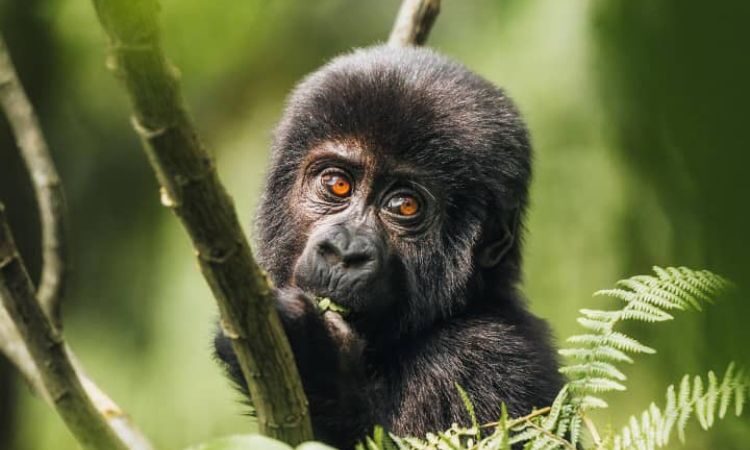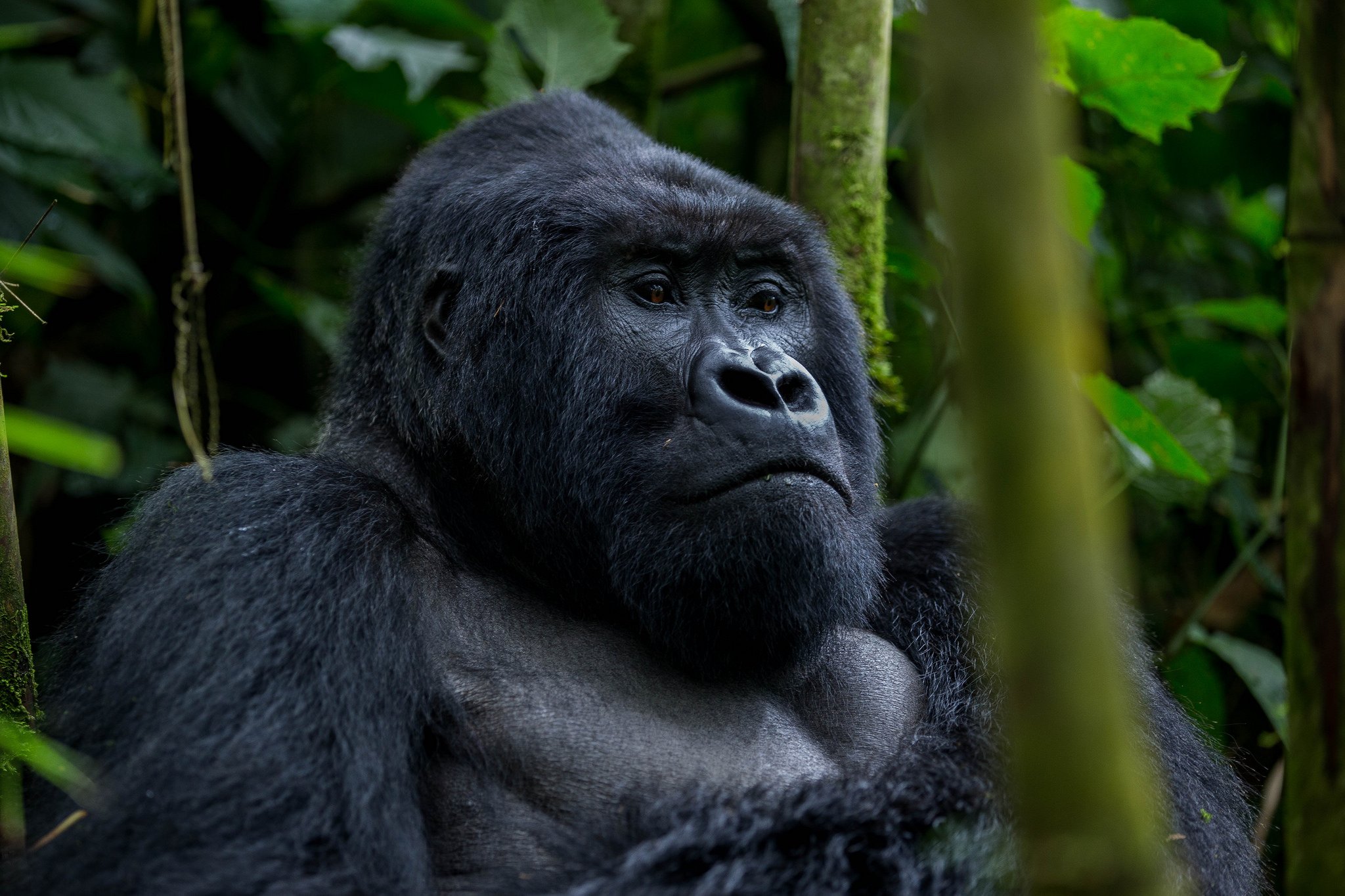Why you need to go Gorilla Trekking in Uganda? Gorilla trekking is one of the most intrinsic and most sought-after wildlife experiences in the world. Gorilla trekking in Uganda is a once-in-a-lifetime opportunity to visit the amazing mountain gorillas of central Africa’s rainforests on the Virunga Mountains’ slopes and in Bwindi Impenetrable National Park. Travelers who have participated in this Uganda safari strongly recommend it. No other animal encounter in Africa, they say, compares to the unforgettable experience of spending face-to-face time with Uganda’s wild gorillas in their native habitat.

Why you need to go gorilla trekking in Uganda?
Sitting in quiet for 60 minutes on the chilly ground of a Ugandan Jungle forest at an altitude of roughly 3,000 m may be one of life’s greatest privileges. There are approximately 1,064 mountain gorillas left in the wild, and gorilla trekking offers a unique opportunity to study these kind, fascinating animals in their natural habitat.
Mountain gorillas can only be found in Uganda’s Bwindi Impenetrable Forest National Park and along the dormant volcanic Virunga mountain range, which stretches across Rwanda’s Volcanoes National Park, Uganda’s Mgahinga Gorilla National Park, and the Democratic Republic of the Congo’s Virunga National Park.
Environmentalists believed that there were only 254 mountain gorillas remaining in the world in 1981, but the limited population is progressively increasing due to intensive worldwide conservation efforts. Because these severely endangered species cannot thrive in captivity, the only way to view them is to hike up to their natural habitat: foggy cloud forests that may reach 14,763 feet in elevation.
Uganda hosts half of the world’s population of Mountain Gorillas.
Bwindi Impenetrable Forest National Park and Mgahinga Gorilla National Park are the two gorilla trekking destinations in Uganda. Because gorillas have little regard for political boundaries, populations in the Virungas are relatively variable. Uganda, on the other hand, has an advantage because Bwindi alone is home to half of the world’s mountain gorillas.
Bwindi Impenetrable Forest National Park (also known as “The Place of Darkness” due to its thick treetops) is a 128-square-mile old montane and lowland forest. Because of its tremendous biodiversity and the vast number of endangered species that call it home, the area was designated a UNESCO World Heritage site.
Mgahinga Gorilla National Park in southwestern Uganda covers 13 square kilometers of the broader Virunga ecosystem, which reaches into Rwanda and the Democratic Republic of the Congo. Mount Gahinga, Mount Muhabura, and Mount Sabyinyo are three of the eight major Virunga peaks inside the national park.
The primary threat to mountain gorillas is habitat degradation. Residents have typically used property near national park boundaries for cultivation or logging, and communities around the parks are densely inhabited.
Support the Local Communities.
Trekkers are urged to search out ways to give back to the villages they visit, as tourism is now Uganda’s most lucrative sector, and the bulk of visitors come to view the mountain gorillas. Hiring a porter, who is invariably a local and occasionally a reformed poacher, is a common choice. The terrain within the parks is unexpected and tough; porters assist trekkers in navigating river crossings and climbing steep, muddy inclines.
Participating in community-led cultural activities is another possibility. The Bwindi Bar in Bwindi village teaches marginalized young adults about hospitality via rigorous classes and practical experience. Elders of the Batwa tribe guide guests on a forest trip along the Batwa Trail in the vicinity of Mgahinga, describing how their self-sufficient, forest-dwelling community historically employed medicinal herbs.
Gorilla Permits in Uganda is more affordable.
To ensure that gorillas remain healthy and natural, tight controls are in place, beginning with the gorilla trekking permit procedure. Because daily viewings of each gorilla group are exceedingly restricted, visitors should apply well in advance of their preferred dates.
Permit prices in Uganda vary depending on the season. Permits are $650 in April, May, and November. They cost $700 the rest of the year. Permits in Rwanda, on the other hand, now cost $1,500 year round.
The majority of gorilla trekking safaris in Uganda takes place in Bwindi impenetrable national park, which has various starting places and several gorilla families to track. Park rangers lead tours, and groups of eight are permitted to study the gorillas for one hour in quiet and at a safe distance.
Take on a challenging trek.
One look at the lush terraced hills and undulating volcanic slopes of southern Uganda reveals that this region of the country is not for the faint of heart. With the high altitude and difficult terrain, gorilla trekking in Uganda promises to be an adventure of a lifetime.

It takes a lot of effort to get to the gorillas. It requires climbing and descending through heavy tangles of vines, thorns, and roots. The aptly called Bwindi Impenetrable Forest National Park can only be reached on foot. There are no pathways, signs, or directions, and there are rarely any clearings (which is why park guards carry machetes). What’s the good news? After all of the effort, the payoff appears to be that much sweeter.
Get to view other primate species during your gorilla trek.
Uganda is a primate lover’s paradise. Mgahinga Gorilla national park is home to another endangered species, the golden monkey, in addition to mountain gorillas. These cuddly, amusing monkeys dwell in bamboo woods. Tracking golden monkeys is comparable to tracking gorillas, although the walk is not as difficult.
Bwindi also has L’Hoest monkeys, gray-cheeked mangabeys, and blue monkeys. Chimpanzees steal the scene in Kibale Forest National Park. Patas monkeys may be found all across Murchison Falls National Park. Blue and red-tailed monkeys may be found at Queen Elizabeth National Park, as well as lions and elephants.


